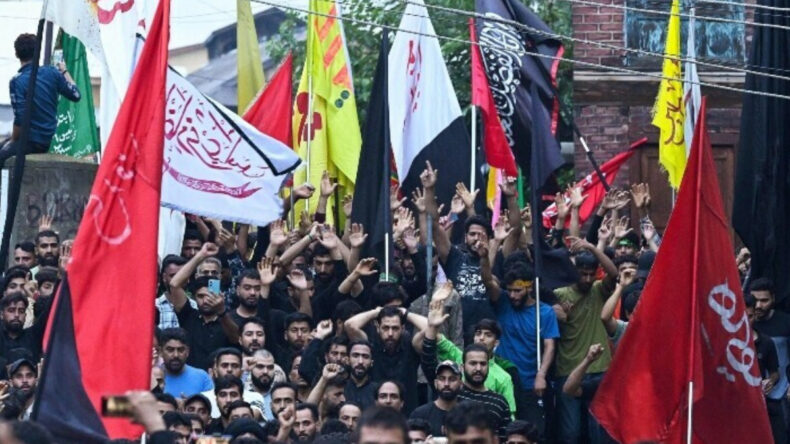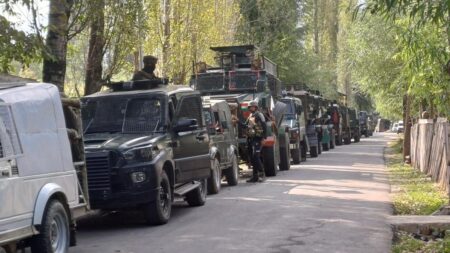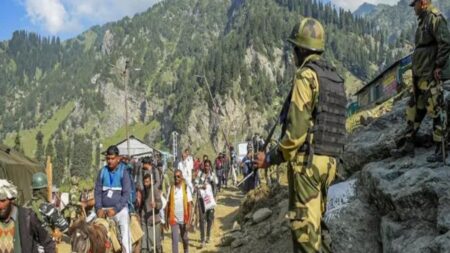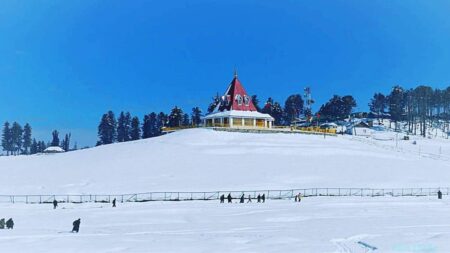
In a historic moment for Kashmir, the 8th Muharram mourning procession made its triumphant return through the heart of Srinagar on July 27, 2024, after a gap of 34 years. The traditional route from Shaheed Gunj to Dalgate, passing through Lal Chowk, witnessed over 25,000 Shia Muslims of Kashmir participating with overwhelming enthusiasm. This powerful event has become a significant marker of the return to normalcy in the region.
The successful conduct of the procession can be attributed to various factors, one of which is the administration’s facilitation led by Lt Governor Shri Manoj Sinha. This decision to grant permission for the event has been met with positive reception, marking a step forward in the region’s progress. It is worth noting that this achievement speaks volumes about the prevailing sentiment among the people, signifying a broader sense of unity and harmony.
Former chief ministers, Omar Abdullah and Mehbooba Mufti, who are vocal critics of the Article 370 decision, remained surprisingly silent on this historic development. While they had dismissed previous indicators of normalcy, such as the record tourist arrivals and the growing number of Shri Amarnath yatris, they were now confronted by the undeniable evidence of the Muharram procession.
Kashmir’s vibrant social media platforms were abuzz with messages of surprise and joy on July 27. The Shias of Jammu and Kashmir, who constitute a significant portion of the population in the region, expressed overwhelming gratitude for the UT Administration’s decision to allow the procession. Many elders of the Shia community, who had lost hope over the years, witnessed a profound change in the valley as they participated in the historic event.
The new generation in Kashmir has made a resolute decision to embrace peace and reject violence. With the abrogation of Article 370, the region has taken significant strides towards progress and prosperity.
Kashmir has witnessed a notable transformation characterized by a gradual return to peace and normalcy. While the process has been ongoing, the Muharram procession through Srinagar serves as a compelling symbol of this positive change. It demonstrates the resilience and determination of the people to embrace a new era of hope and progress. Despite the challenges and uncertainties that have clouded the region in the past, the Muharram procession’s successful conduct stands as a testament to the growing sense of stability and unity among the residents of Kashmir.
It signifies their earnest efforts to reclaim a sense of normalcy and chart a path towards a brighter future, independent of the complex political narratives that have shaped the region’s history. As the Muharram mourners walked through the streets, it was evident that the spirit of solidarity and harmony prevailed, cutting through the shadows of the past and fostering a collective vision of peace and prosperity. This transformation in Kashmir is a result of the people’s determination to build a better tomorrow.
As the Centre continues its focus on peace and development in Kashmir, critics should take heed of the changing narrative and the ground reality in the valley. The Muharram procession’s success points towards the path of progress that Kashmir is now treading.
The successful conduct of the Muharram procession through Srinagar is a momentous event that signifies the return of normalcy and the transformative changes in the region. The people of Kashmir have embraced the ideals of Naya Kashmir and are moving forward with hope and determination for a better future. As the journey towards peace and prosperity continues, the Muharram procession remains a testament to the new dawn in Kashmir.













